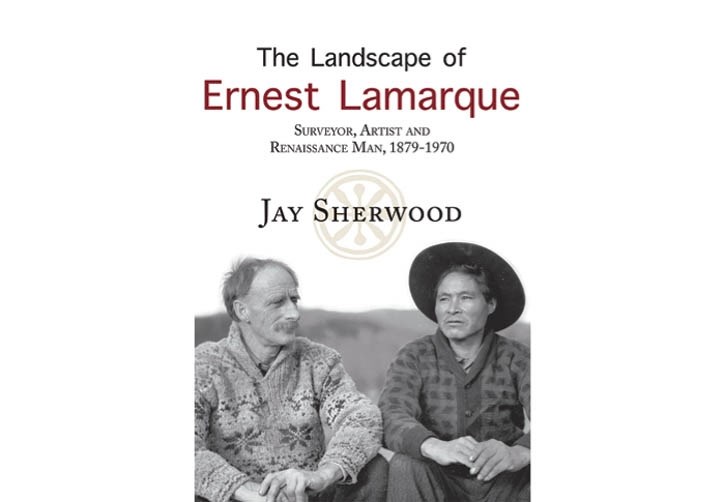The Whyte Museum of the Canadian Rockies has invited author Jay Sherwood for a free presentation on his latest book The Landscape of Ernest Lamarque: Artist, Surveyor and Renaissance Man, 1879-1970 on April 21 at 7 p.m.
Lamarque’s career as surveyor and Hudson’s Bay Company clerk spanned Western Canada as he documented his work and the people he met through writing, art and photography. Much of Lamarque’s materials are now housed at the Whyte Museum, with publication of Sherwood’s book coinciding with the museum’s current exhibition of his art work.
“The Lamarque works is one of their feature collections, and as far as I know it’s supposed to be the very first collection that they received when the museum opened in 1968, so it’s a special one to them,” Sherwood said. “He lived to 90 years old and had a very active life, which entailed a lot of research. He did a lot of things; he started out as a Hudson Bay clerk for awhile, mostly on the Prairies, but also up in northeastern B.C.”
Lamarque then went into surveying for most of his career. Much of his surveying was in B.C., but he was in Alberta a couple of times and he surveyed the first ski hills at Lake Louise.
“That’s where he met Lizzie Rummel, one of the board of directors of the Whyte Museum when it started up and she’s the one that persuaded him to donate his materials to the Whyte Museum,” Sherwood said.
He’s now written a number of books on surveyors in B.C. and Lamarque is a name that popped up quite often during his research. Sherwood had been to the Whyte Museum quite a few times previously on other research projects and had looked at some of the Lamarque material.
“Of course there’s that huge map they have that he made from the Bedaux Expedition (Charles Eugčne Bedaux, 1934) and I kind of figured it would be a book someday and this seemed to be a good time, particularly because they were so enthusiastic about it at the Whyte Museum,” Sherwood said.
“They wanted a book done about Lamarque to show the public their collection of his material.
“Presently, most of his material is in Banff, with some of it is at the Library and Archives Canada in Ottawa and in B.C. His material got around, but the bulk of it is at the Whyte Museum,” Sherwood said.
In most of his surveying, Lamarque had to travel in a lot of remote areas, adding to what makes the man, his surveying and artwork so interesting.
“He was out in these places that few people went and wanted to record his experiences, whether it was through a camera, painting or writing, and with the Hudson Bay he was in Saskatchewan, Alberta, B.C. and Northwest Territories,” Sherwood said.
“The surveying was in Alberta and B.C., so he really covered a lot of Western Canada during his lifetime. Most of the surveying was for the government, while the Bedaux Expedition was a private expedition. The government recommended people for it and he was the one chosen to find and locate the route for the expeditions for a variety of things that he had already accomplished.
Sherwood’s official research for the book started in 2013. He’d always seen Lamarque’s name, but that’s when he became more serious on tackling the man’s life.
“I think for me it was the variety of work that he did and all of the interesting places he visited. I did a couple of survey books on a well-known surveyor named Frank Swannell, and Swannell was very much a technical surveyor.
“With Larmarque the surveying was more of a job that he did for the experience of being out there in these areas and to be able to write or paint,” Sherwood said. “It was his impression of the land and his feelings about the landscape – that was very interesting; and definitely his painting.”
Lamarque’s oldest paintings go back to his 20s, detailing his lifelong expression of himself and his work.
“His painting went on through his life for many years, so the Whyte Museum exhibit represents his work over several years,” Sherwood said. “He painted right up to the last years of his life.”




